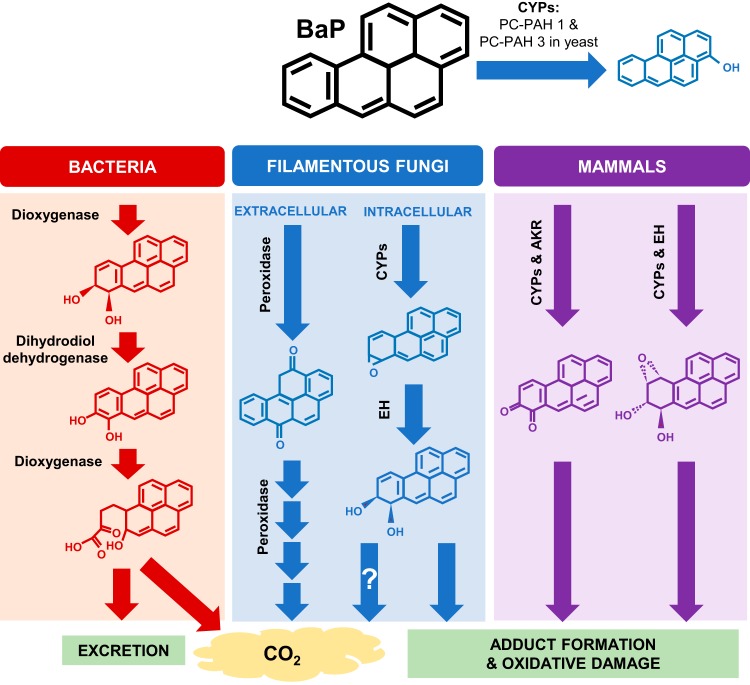FIG 1.
Schematic presentation of BaP transformation in mammals, fungi, and bacteria. Bacteria and fungi are both able to mineralize BaP; however, the initial enzymatic transformation steps differ drastically in that bacteria utilize dioxygenase enzymes, whereas fungi utilize extracellular peroxidase enzymes (46). Mammalian and intracellular fungal pathways overlap in their utilization of CYP enzymes yielding similar metabolites; however, far less is known about the specific CYPs and metabolites produced by fungi. The CYPs Pc-PAH1 and Pc-PAH3 in P. chrysosporium, which have the ability to convert BaP to 3-hydroxybenzo[a]pyrene when expressed in P. pastoris, are shown. Mammals utilize other enzymes in partnership with CYPs, such as epoxide hydrolases (EH) and aldo-keto reductases (AKR), but because the limited studies on fungal CYPs were done using heterologous expression, it is unknown whether other enzymes are involved in BaP metabolism and what the final metabolic products are.

